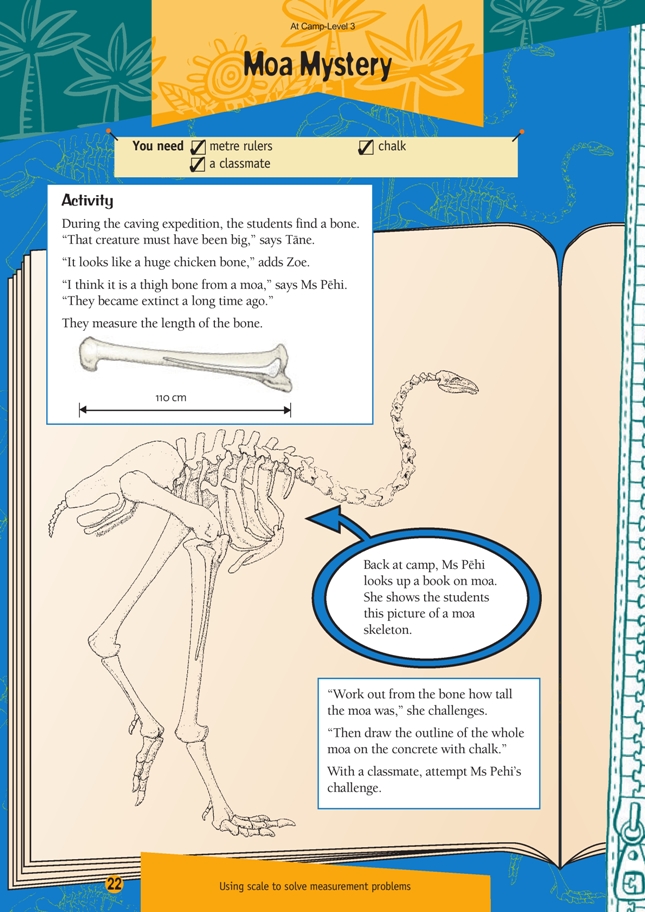Moa Mystery
This is a level 3 geometry activity from the Figure It Out theme series.
A PDF of the student activity is included.
Click on the image to enlarge it. Click again to close. Download PDF (241 KB)
use scale factors from a diagram to calculate length
draw an enlargement
Metre rulers, chalk
A classmate
In this activity, students will be applying techniques that are used by forensic scientists to estimate the size of people and animals. They will be using ratio or proportion.
Students will first need to calculate what part of the moa’s height was taken up by the thigh bone. In the scale drawing of the moa, the thigh bone measures 69 millimetres.
The moa’s height in the drawing is 153 millimetres. Generally, moa were over twice as tall as the length of their thigh bones, but 153 ÷ 69 = 2.22 is a more accurate scale factor for this activity.
The thigh bone found during the caving expedition is 110 centimetres long, so the moa’s height would have been 110 x 2.22 = 244 centimetres or 2.44 metres.
Challenge students to work out how long the other major bones of the moa would have been, given the size of the thigh bone. They will need this information if they are to draw the life-size moa skeleton on the concrete or on paper.
Students will need to work out what fraction of 110 centimetres each bone is. For example, the lower leg bone is 30 millimetres long in the picture, and therefore it is less than half the 69 millimetre length of the thigh bone. 30 ÷ 69 = 0.435 gives the scale factor. 0.435 x 110 cm = 47.9 cm gives the actual real-life length of this moa’s lower leg bone.
Answers to Activities
Students may measure the moa as it stands in the illustration. The moa in the illustration is approximately 153 mm from its head to the ground. So its actual height would have been 153 ÷ 69 x 110 = 244 cm (2.44 m). Students could discuss whether the moa raised its head higher on occasions.
